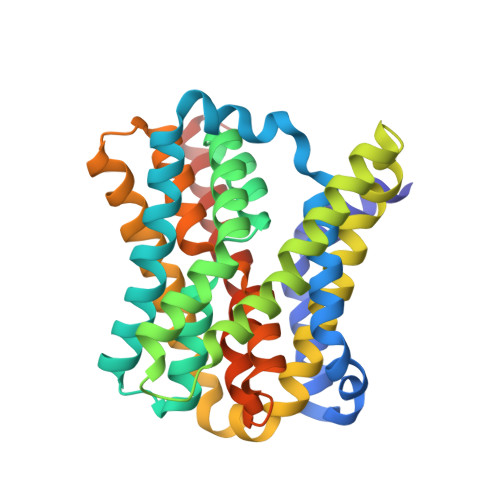Mechanism of substrate binding and transport in BASS transporters.
Becker, P., Naughton, F.B., Brotherton, D.H., Pacheco-Gomez, R., Beckstein, O., Cameron, A.D.(2023) bioRxiv
- PubMed: 37645971
- DOI: https://doi.org/10.1101/2023.06.02.543391
- Primary Citation of Related Structures:
8OYF, 8OYG - PubMed Abstract:
The Bile Acid Sodium Symporter (BASS) family transports a wide array of molecules across membranes, including bile acids in humans, and small metabolites in plants. These transporters, many of which are sodium-coupled, have been shown to use an elevator mechanism of transport, but exactly how substrate binding is coupled to sodium ion binding and transport is not clear. Here we solve the crystal structure at 2.3 Å of a transporter from Neisseria Meningitidis (ASBT NM ) in complex with pantoate, a potential substrate of ASBT NM . The BASS family is characterised by two helices that cross-over in the centre of the protein in an arrangement that is intricately held together by two sodium ions. We observe that the pantoate binds, specifically, between the N-termini of two of the opposing helices in this cross-over region. During molecular dynamics simulations the pantoate remains in this position when sodium ions are present but is more mobile in their absence. Comparison of structures in the presence and absence of pantoate demonstrates that pantoate elicits a conformational change in one of the cross-over helices. This modifies the interface between the two domains that move relative to one another to elicit the elevator mechanism. These results have implications, not only for ASBT NM but for the BASS family as a whole and indeed other transporters that work through the elevator mechanism.
Organizational Affiliation:
School of Life Sciences, University of Warwick, Gibbet Hill Road, Coventry, CV4 7AL, U.K.



















